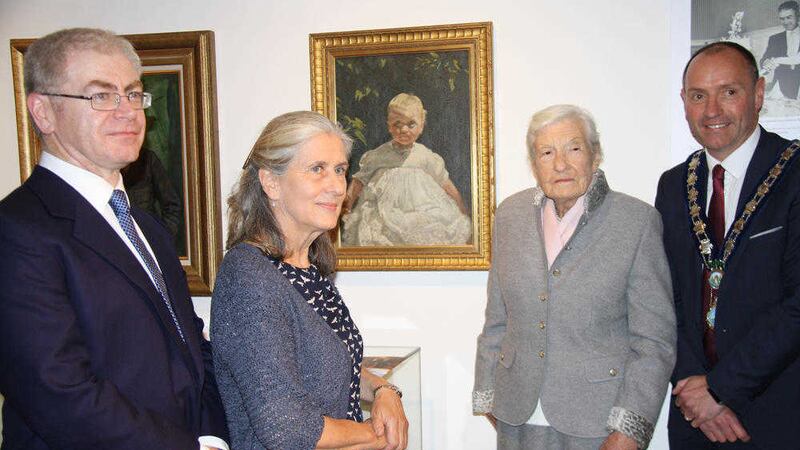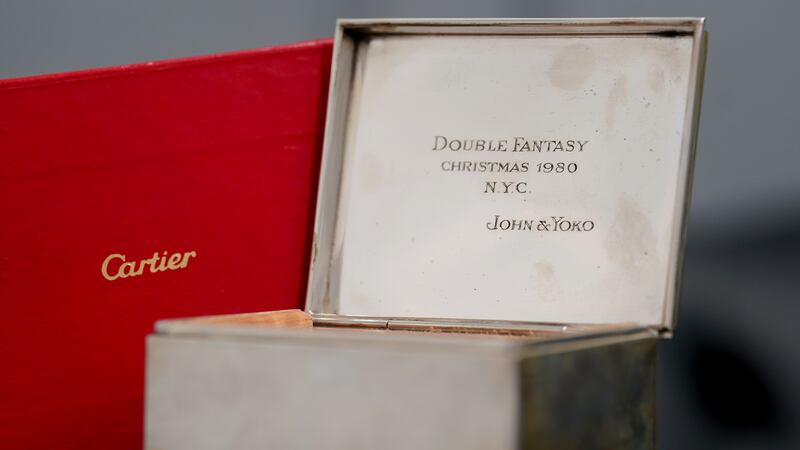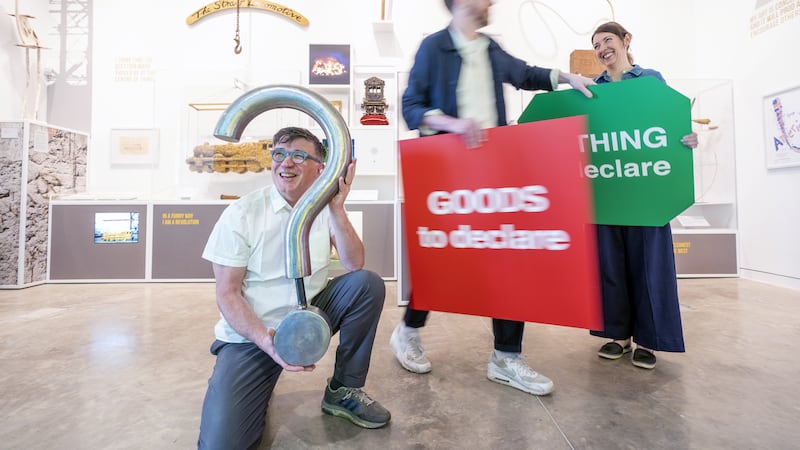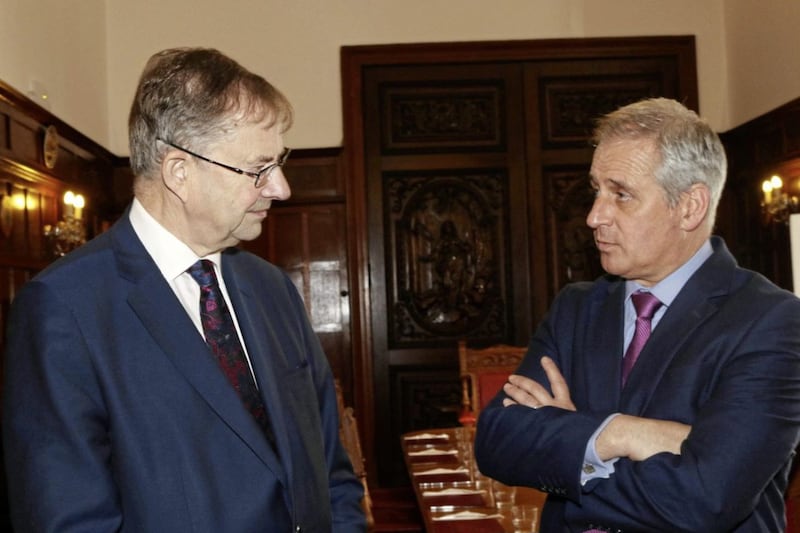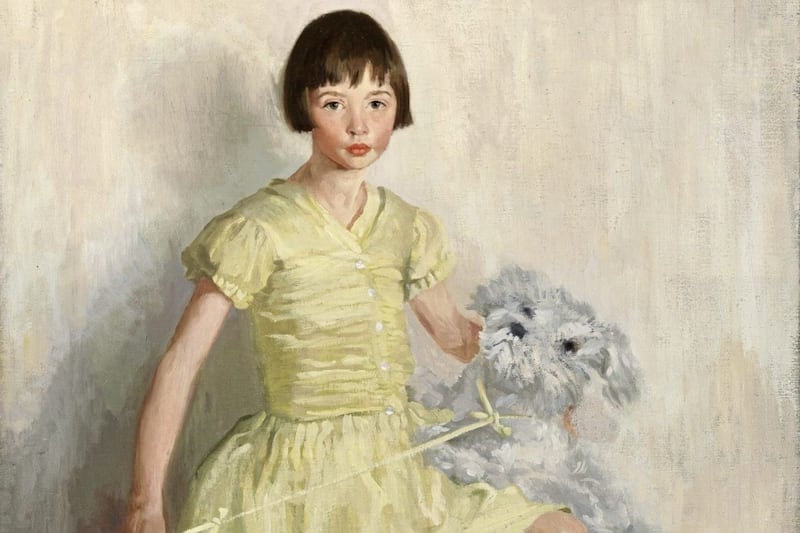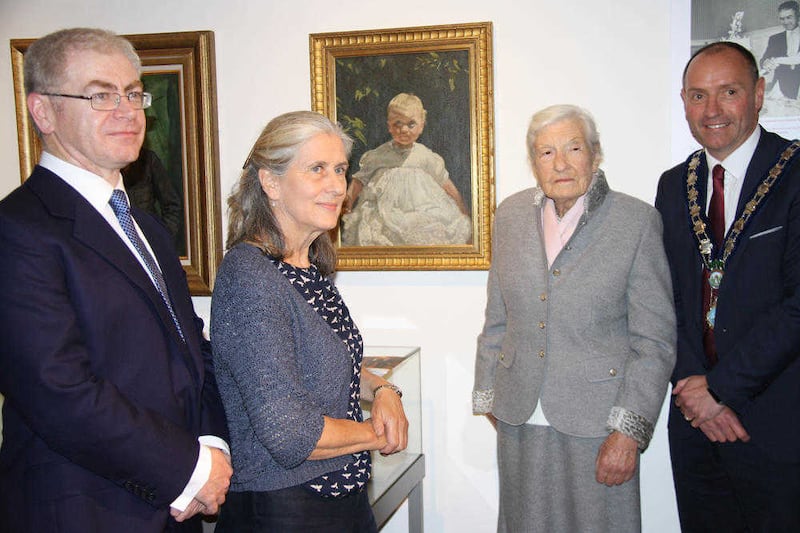FROM Irish presidents to renowned artists and a prisoner of war activist, the Newry and Mourne district has many stories to tell of influential female figures from the area in the past century.
A new exhibition at Newry & Mourne Museum explores the role and achievements of women with connections to the area in the fields of business, education, sport, politics, religion the arts and even war.
Women in Newry and Mourne in the 20th Century features artefacts and memorabilia including photographs, documents, objects, fine art, personal accessories and costumes.
A key piece is the dress worn by former president Mary McAleese when she attended the state banquet held in Dublin Castle in honour of the historic state visit by Queen Elizabeth to the Republic in May 2011.
Newry-born artist Margaret Clarke features prominently, with four of her paintings on display, as well as photographs and a catalogue of her first solo exhibition held at the Stephen's Green Gallery in Dublin in 1924.
The daughter of Patrick Crilley, a 'hackler' or flax-dresser, Margaret Clarke was born at 17 Thomas Street in Newry in August 1884 – an Ulster History Circle plaque was unveiled at her birthplace in 2007.
She worked as a teacher in the local national school before pursuing her gift of drawing with night classes at Newry Municipal Technical School, followed by a scholarship to Dublin Metropolitan School of Art.
There she studied painting under the Irish artist Sir William Orpen, best known for the works he produced on the Western Front when he was sent there as an official artist during the First World War.
Clarke's initial work was portraiture and one of her studies was the Dublin illustrator and stained glass artist Harry Clarke – whose most popular work is perhaps the stained glass windows in Bewley's Cafe in Grafton Street – whom she went on to marry in 1914.
"With her husband and Sean Keating, another of Orpen's pupils, she visited the Aran islands, then the mecca for young Irish artists in the aftermath of the Celtic Revival," says Newry museum's assistant curator Dr Ken Abraham.
During the inter-war years, Clarke established herself as one of Ireland's most important portrait painters. Among the public figures painted by her were Archbishop of Dublin John Charles McQuaid and Irish president Éamon de Valera – an archival quality print of a de Valera portrait by Clarke currently held by The Irish News was recently donated by Irish News chairman Jim Fitzpatrick to the museum.
"At that time in Ireland, certainly, it was unusual for a woman to be commissioned to do such high-profile paintings. If she had gone to London she would have became more prominent and probably painted for royalty, but her husband died quite young and she loyally remained in Dublin to manage his studios," Dr Abraham says.
After the early death of Harry Clarke in 1931, Margaret Clarke took over the management of his stained glass studios with her son David and daughter Ann while developing her own interest in still life and landscape paintings. She died in 1961; many of her paintings are in the National Gallery of Ireland and in the Ulster Museum.
The Women in Newry and Mourne in the 20th Century exhibition features two painting of her youngest child David, a religious painting of The Three Marys and the oil painting The Wife/The Haircut, which is on loan from the Irish News Collection.
The exhibition and accompanying catalogue highlights some of the individual stories of local women who demonstrated huge bravery in their lifetimes and those who actively fought for equality and suffrage, particularly at a time when government legislation actively worked against them.
One of the most fascinating wartime stories is that off Ada Bodart, nee Doherty, who was born in Newry in 1874. Working as a governess in Brussels, the widowed mother-of-two assisted her friend, nurse Edith Cavell, to help Allied soldiers and prisoners of war in German-occupied Belgium escape to neutral Holland.
Her home was used as a refuge for the soldiers and also housed the printing equipment used to produce the false papers and identity cards needed for their escape. Disguised as a peasant woman, she would lead the soldiers, dressed as Belgian workmen, to the border.
From November 1914 until August 1915 the pair helped hundreds escape. But upon their arrest, both women were sentenced to death. Cavell was executed but on the intervention of the Spanish minister to Belgium Bodart's sentence was commuted to 15 years' hard labour in a German prison. She was released after the end of the war and, in 1928, starred in a film depicting the role she had played during the conflict.
While both world wars also provided an opportunity for women to take up a variety of traditionally male roles, these usually reverted back to men, once war ended.
One exception was the Sex Disqualification Act passed in 1919 which allowed women to practice law. Margaret Reside became one of Newry's most popular solicitors, working in her father's business Fisher and Fisher.
Among the legal cases she was involved in was that of a fatal collision between two boats, the Lady Cavan and the SS Alder, in Carlingford Lough in 1937 that is still remembered locally. The exhibition features a purple wartime economy dress worn at her wedding to Major Gerald Reside in 1947.
The exhibition also highlights the contributions women made through their role in voluntary work and women's organisations such as the Women's Institute, Inner Wheel and Soroptimists.
Other fascinating artefacts include: a 1917 autograph book belonging to Kilkeel nurse Margaret Anderson featuring the drawings and messages of injured soliders; merchandise from Mourne Textiles Ltd and a bottle from Boden's bottling works in Newry, which was run by Catherine Boden; 1930s stockings and curlers and a hand-written recipe book.
“This exhibition will help us gain an insight into this neglected aspect of local history and heritage and highlight the important role played by women in the development of society in the Newry and Mourne area over the last one hundred years. I would like to thank all those who responded to the museum’s appeal for artefacts, documents and information," adds Newry, Mourne and Down District Council chairman Mickey Ruane.
:: Women in Newry and Mourne in the 20th Century continues at Newry and Mourne Museum at Bagenal's Castle.
